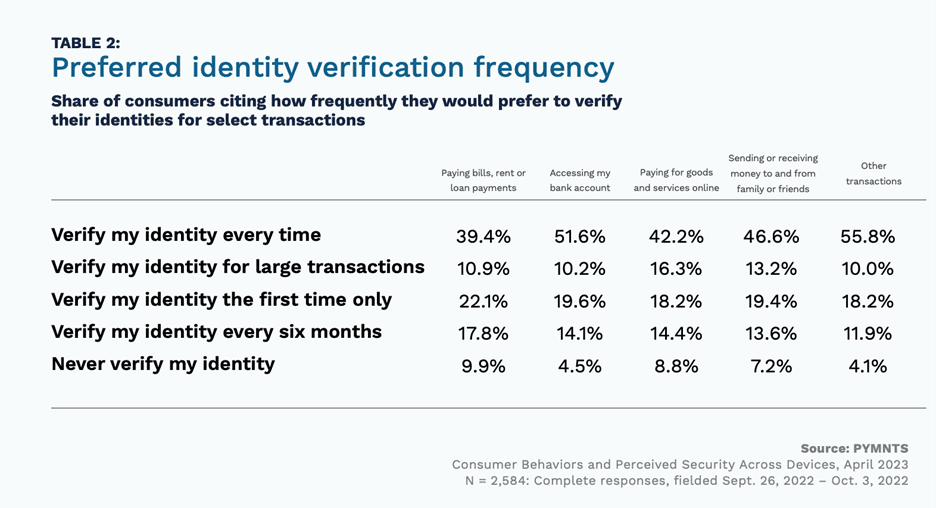42% of Consumers Say ‘Verify Me’ Whenever They Pay for Goods and Services

Security is top-of-mind for consumers as data breaches swirl across the headlines.
To that end, as found in the report “Consumer Behaviors and Perceived Security Across Devices,” done in collaboration between PYMNTS and Entersekt, and as relayed by nearly 2,600 individuals, it seems the desire for more control over financial security is nearly universal.
And that means consumers don’t mind being authenticated across a range of daily financial activities and tasks. That’s especially true with the 83% share of consumers that want multifactor verification for infrequent transactions.
As detailed in the table below, more than 42% of individuals want to have their identities verified each and every time they pay for goods and services.
The means of doing so are there, as so much of life is lived online generally — and specifically is lived on a variety of devices, from tablets to mobile phones to desktop computers. There’s a bit of bifurcation here, as younger generations — Generation X and younger — prefer to wield smartphones to conduct transactions and to pay for what they need. For Boomers? Desktop’s been the way to go. There’s indication that banks are the go-to-providers here, as about 57% of respondents have said that they trust banks to protect their money and their identities.

There’s recognition that the devices themselves have some security risks, even as we’ve all become more adept and comfortable with using various forms of hardware and software to bank, pay bills and shop.
Our research finds that smartphones have edged out computers in terms of perceived security for sending and receiving money, with 22.2% of consumers saying mobile devices provide more security. Roughly 20.5% of consumers have gone on record with us as saying the same about computers. When paying for online purchases, 22.1% say smartphones are more secure, and 18.8% say computers are more secure.
The PYMNTS/Entersekt data show that even as traditional FIs have cemented trust with their constituents, half of banking consumers want manual authentication for every higher-risk activity they conduct. With a bit more granular insight, 52% of respondents want to authenticate their identities each time they access their bank account, and 47% say the same for cash transfers to or from family and friends.

